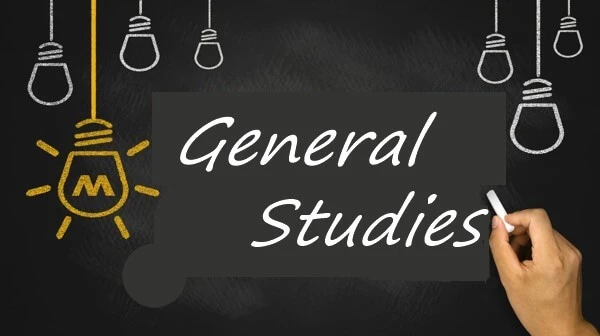Rock Properties Books
Physical properties of Alkyl Halides note
Author: CHM UNN
School: University of Nigeria, Nsukka
Department: Science and Technology
Course Code: CHM122
Topics: Alkyl Halides, cyanide
Mechanics, Properties of Matter and Thermal Physics
Author: Physics Writer Series Creation, PN Okeke, JO Ebeniro, FN Okeke, FC Eze
School: University of Nigeria, Nsukka
Department: Science and Technology
Course Code: PHY115
Topics: motion, speed, displacement, velocity, acceleration, free fall, projectile motion, vector, vector representation, vector addition, vector multiplication, Newton's law, weight, work, energy, power, mechanical energy, machine, linear momentum, angular velocity, circular motion, oscillation, rotational dynamics, compound pendulum, static equilibrium, hydrodynamics, temperature, thermometers, temperature scale, Gas laws, thermal expansion, linear expansion, heat capacity, latent heat, thermal conduction, thermal conductivity, thermodynamics, heat transfer
Mechanics and properties of matter
Author: George Whyte
School: University of Port Harcourt
Department: Science and Technology
Course Code: PHY101
Topics: measurement, dimension, vectors, scalars, linear kinematics, dynamics, work, energy, power, conservation of linear momentum, dynamics of circular motion, dynamics of rotational motion, Rotational Kinetic Energy, Law of Conservation of Angular Momentum, Parallel Axis Theorem, center of gravity, moment, Oscillation, simple harmonic motion, Elastic Potential Energy, elasticity, Bulk Modulus, mechanics of fluid, density, Pascal’s principle, Capillarity, Atmospheric Pressure, pressure, Archimedes’ principle, surface tension, unit conversion, Parallelogram Law of Vectors
Concrete Technology Theory and Practice, Multicolour Edition
Author: MS Shetty
School: Bayero University, Kano
Department: Engineering
Course Code: CIV5307
Topics: Concrete technology, Cements, Modern cements history, Portland cement manufacturing, Portland cement wet process manufacturing, Portland cement dry process manufacturing, Cement chemical composition, Cements hydration, Heat of hydration, Calcium silicate hydrates, Calcium hydroxide, calcium aluminate hydrates, hydrated cements structure, Water requirement for hydration, Cement types, ASTM cements classification, Ordinary Portland cement, Rapid hardened cement, Extra rapid hardening cement, Portland slag cement, Quick setting cement, super sulphated cement, low heat cement, Portland pozzolana cement, coloured cement, hydrophobic cement, masonry cement, expansive cement, Cement testing, Aggregates, aggregates testing, Aggregates form igneous rock, aggregates from sedimentary rocks, aggregates from metamorphic rock, aggregate crushing value, aggregates impact value, aggregate abrasion value, Deval attrition test, Dorry Abrasion test, Los Angeles test, modulus of elasticity, bulk density, specific gravity, Sieve analysis, Aggregates testing, Water, water qualities, Sea water for mixing concrete, Admixture, construction chemicals, Plasticizers, water reducers, Workability, Plasticizers action, Superplasticizers classification, Factors affecting workability, Superplasticizers types, Fresh concrete, Fresh concrete water content, Fresh concrete mix proportions, Aggregates sizes in fresh concrete, Aggregates shape, Surface texture, Admixture use in fresh concrete, Workability measurement, Slump test, k-slump test, aggregates grading, compacting factor test, flow test, flow table apparatus, vee bee consistometer test, setting of concrete, Manufacture of concrete process, Concrete compaction, Concrete curing, Concrete strength, Water-cement ratio, Strength gaining with age, Concrete maturity concept, Bond strength, High strength concrete, Elasticity, Creep, Shrinkage, Aggregates elastic properties, Modulus of Elasticity, Dynamic modulus of elasticity, Poison's ratio, Creep rheological representation, Creep measurement, Factors affecting creep, Aggregate influence, Mix proportion influence, Shrinkage, Plastic Shrinkage, Drying Shrinkage, Moisture movement, Autogenous Shrinkage, Carbonation shrinkage, Concrete Durability, Strength to Durability relationship, Concrete volume change, Durability definition, durability significance, Permeability, Cement paste permeability, Concrete permeability, Plastic shrinkage cracks, Settlement cracks, Thermal shrinkage, Hardened concrete testing, Concrete mix design, Special concrete, concrete methods
Applied Strength of Materials, 6th Edition
Author: Robert Mott, Joseph Untener
School: Bayero University, Kano
Department: Engineering
Course Code: CIV3308
Topics: Direct Normal stress, stress, strain, Direct shear stress, Screw Threads, Experimental stress analysis, Computational stress analysis, Fundamental of statics, Materials design properties, Properties of steel, Properties of Cast Iron, Properties of Aluminum, Wood, Concrete, Plastics, Composites, Direct stress, Deformation, Computing design stress, Thermal stress, Bearing stress, Design bearing stress, Twisting, Elastic Torsional Deformation, Torsion, Beam loading, Beams supports, Beam types, Supports reactions, Centroids, Complex shapes centroid, Radius of Gyration, section modulus, Flexure formula, General shear formula, Special shear formulas, Shear flow, Beams deflection, combined stress, Columns, Slenderness Ratio, Buckling formula, Pressure vessels, Bolted connections design, Rivet joints, Eccentrically loaded riveted joints, Eccentrically loaded Bolted joints
Author: SL Kakani
School: Federal University of Technology, Owerri
Department: Engineering
Course Code: ENG207, ENG208
Topics: Atomic Structure, Electronic Configuration, Crystal Geometry, Crystal Structure, Crystal Defects, bond, electron theory, Photoelectric Effect, diffusion, mechanical test, alloy, phase diagram, phase transformation, heat treatment, deformation, oxidation, corrosion, thermal properties, optical properties, electrical properties, magnetic properties, semiconductors, superconductivity, polymers, elastomers, organic materials, composites, nanostructure, spintronics, crystal, whiskers, unit cell, Co-ordination Number, crystal Imperfections, Anisotropy, Frank-Read Source, Crystal Growth, bond, Drude-Lorentz Theory, Metallic Bonding, . Fermi-Dirac, Sommerfield Free-Electron Theory, Brillouin Zones, Energy Bands, Resistivity, Conductivity, Thermoelectricity, Einstein’s Photoelectric Equation, Photoelectric Cell, Fick’s Laws, Surface Diffusion, Atomic Model, Mechanical Tests, Hume-Rothery’s Rules, Lever Rule, Annealing, Mass Effect, Pyrometers, Elastic Deformation, Plastic Deformation, Twinning, Work Hardening, Strain Hardening, Season Cracking
Reservoir Engineering Handbook
Author: Tarek Ahmad
School: Federal University of Technology, Owerri
Department: Engineering
Course Code: PET304, PET403, PET502
Topics: Reservoir Fluid Behavior, Reservoir-Fluid Properties, Reservoir Fluids, Rock Properties, Relative Permeability Concepts, Reservoir Fluid Flow, Oil Well Performance, Gas and Water Coning, Water Influx, Oil Recovery Mechanisms, Material Balance Equation, Oil Reservoir Performance, Gas Reservoirs, Waterflooding, Vapor-Liquid Phase Equilibria
Author: Gaurav Tripathi
School: University of Nigeria, Nsukka
Department: Engineering
Course Code: EGR201
Topics: Materials Science, materials Engineering, Rutherford model, Bohr model, atom, De- Broglie’s atomic model, Atomic bonding, ionic bonding, covalent bonding, Secondary Bonding, metallic bonding, Fluctuating Induced Dipole Bonds, Polar Molecule-Induced Dipole Bonds, Permanent Dipole Bonds, Crystallography, crystal structures, Crystal Lattice, Bravais lattices, Metallic Crystal Structures, Polycrystalline Materials, Non-Crystalline Solids, Miller Indices, Point Defects, Mechanical Properties of Metals, Stress-Strain curve, Elastic deformation, plastic deformation, Tensile Properties, Brinell Hardness Test, Micro-hardness Test, Knoop Hardness Test, Scleroscope Hardness Test, durometer, fracture, creep, dislocation, Solid-Solution Strengthening, Microstructural Exam, Grain size determination, carbon steel, cast iron, alloy, Dielectric Materials, Dielectric strength, Intrinsic dielectric strength, Magnetic Properties, Diamagnetism, Ferromagnetism, Ferrimagnetism, Hard Magnetic Materials, Extrinsic Semiconductor, semiconductor
Author: John Olusina Obimakinde, Samuel Oluwaseun Obimakinde
School: WAEC, JAMB & POST UTME
Department:
Course Code: CHEMISTRY
Topics: Chemistry Calculations, Masses and Formulae, Relative Atomic and Molecular Masses, Mass Percentage Composition, Valency, Chemical Formula, Empirical and Molecular Formulae, Reduced Mass, Chemical Reaction, Stoichiometry, Mole, Chemical Equations, Reaction Stoichiometry, Chemical Laws, Redox Reactions, IUPAC Nomenclature, Oxidation Number, Redox Equations, IUPAC Nomenclature of Inorganic Substances, Atomic Structure, Chemical Bonding, Dalton’s Atomic Theory, Wave-Particle Duality of Matter, Uncertainty Principle, Ionization Energy, Ionic Bond, Lattice Energy, Covalent Bond, Heat of Reaction, Dipole Moment, Formal Charge, The Gaseous State, Gas Pressure, Gas Laws, Critical Constants of Gases and Equations of State for Real Gases, Reduced State Properties, Gas Density, Gas Stoichiometry, Molar Volume of Gases, Relative Vapour Density, Gas diffusion, Mole Fraction, Kinetic Theory of Gases, The Solid and Liquid States, Vapour Pressure, Change of State, Density of Solids, X-Ray Crystallography, Determination of Viscosity of Liquids from Stokes’ Law, Surface Tension, Properties of Solutions, Concentration, Molality, Solubility, Solubility Product, Colligative Properties of Solutions, Conductance of Solutions, Quantitative Analysis, Volumetric Analysis, Gravimetric Analysis, Thermodynamics, Calorimetry, Heat (Enthalpy Change) of Physical Change, Heat (Enthalpy Change) of Reaction, Heat Capacities of Gases, Thermodynamics of Solutions, The First Law of Thermodynamics, The Second Law of Thermodynamics, Efficiency, Electrochemistry, Electrochemical Cells, Electrolysis, Chemical Equilibria, Le Chatelier’s Principle, Position of Equilibrium, Equilibrium Constant, Reaction Quotient, Acid-Base Equilibria, Acid Ionization Constants, Base Ionization Constants, Water Autoionization Constant, Hydrogen Ion Concentration, Buffer Solutions, Salts, Chemical Kinetics, Rates of Reactions, Rate Law, Nuclear Chemistry, Radioactivity, Nuclear Reactions
INTRODUCTION TO PETROLEUM ENGINEERING
Author: Engr Dr Kerenwa
School: Federal University of Technology, Owerri
Department: Engineering
Course Code: PET202
Topics: reservoir rock, source rock, carbonateds
Departments

Administration, Social and Management science

Agriculture and Veterinary Medicine

Arts and Humanities

Education

Engineering

General studies

Law

Medical, Pharmaceutical and Health science

Science and Technology